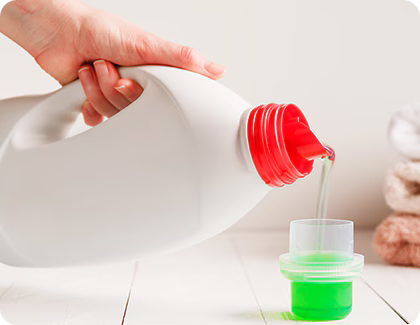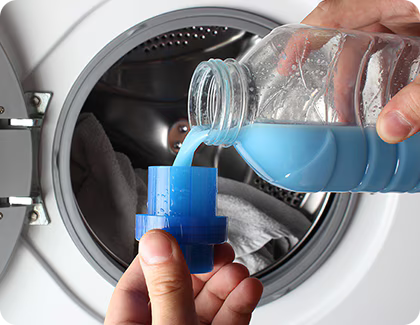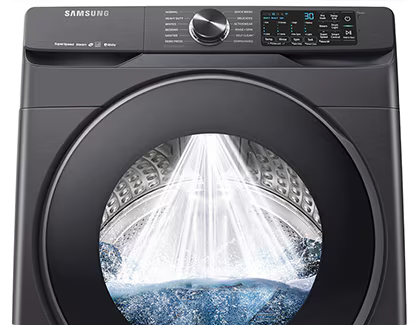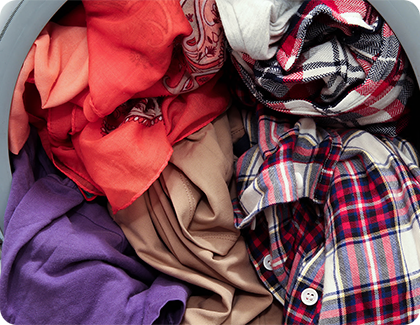Expert tips to get cleaner clothes with your Samsung washer

Laundry is fundamentally a simple task, but certain common errors can compromise both your clothing and washing machine. Missteps like using the wrong amount of detergent or fabric softener, neglecting to remove clothes after a cycle, or overloading the washer can prevent your garments from getting thoroughly clean. We have prepared some key guidelines to help you perfect your laundry process so your clothes will always emerge spotlessly clean.
Note: While the advice in this guide is universally applicable, it has been tailored specifically for our Canadian customers.

Sorting your laundry is foundational to effective washing. Always separate darks from whites to prevent color bleeding that can stain garments. Additionally, avoid washing delicate or synthetic fabrics (such as polyester, nylon, spandex) with rougher materials like towels or jeans. Coarse materials can abrade and damage lighter fabrics during the wash cycle. For instance, keep white shirts, towels, and sheets in separate loads from colors to maintain their brightness and prevent any color transfer.
You should always follow the detergent manufacturer’s guidelines for the correct amount to use, based on your load size. Never exceed the Max Fill line in the detergent drawer, even if instructions suggest a larger amount; instead, opt for a more concentrated detergent or adjust your load size to avoid overuse.

Lost the detergent cap? Use a measuring cup to ensure you don't pour too much. Using too much detergent can create too many suds, which might damage your washer and leave dirt in your clothes. On the other hand, using too little detergent means your clothes may not get fully clean. Aim to use the smallest amount of detergent needed to clean your clothes effectively. This approach saves money and helps prevent detergent buildup in your machine.
If using color-safe bleach, always add it directly into the detergent compartment or the tub, not the bleach compartment. Consider choosing environmentally friendly detergents that are less harmful to ecosystems and still effective at cleaning your clothes.
While fabric softener can make your clothes softer and add a fresh scent, it’s not always the best choice for your clothing or washer. Fabric softeners work by coating your clothes with chemicals that remain even after the wash cycle ends. Over time, this can degrade fabric quality and reduce absorbency, especially in towels.

Instead of using a large amount of fabric softener, consider using just a small quantity. Better yet, opt for a natural alternative like white vinegar. Vinegar not only softens fabrics but also helps to clean the washing machine. Despite what you might think, it won’t leave your clothes smelling like vinegar after they dry.
Your Samsung washer is equipped with various cycles tailored for specific clothing needs. Each cycle is designed to optimize cleaning performance for different fabric types. For instance, the Delicate cycle uses cooler water to gently clean sensitive materials without causing shrinkage, while the Normal cycle employs hotter water, ideal for more durable items like white cotton garments.

It’s crucial to select the right cycle for your laundry to ensure the best results. For detailed information on the specific cycles available on your model and tips on when to use them, consult your user manual.
Many of us are tempted to rush laundry day by overloading the washer, but this practice can harm both your clothes and the machine. When the washer is too full, clothes may not get evenly washed or thoroughly rinsed, as detergent might not reach every item. Furthermore, overloading can cause the machine to become unbalanced, leading to potential mechanical issues.

Ideally, fill the washer to no more than three-quarters full. If necessary, smaller loads are also acceptable. This ensures a more effective wash and prolongs the life of your machine.
Most of us have forgotten a load of wet clothes in the washer at least once. While it might seem harmless, leaving clothes sitting wet can damage them. Garments can become wrinkled, start to smell, or even develop a musty odor from the moisture. Over time, even a dryer may not be able to reverse these effects.

To prevent this, only start laundry when you know someone will be available to remove it promptly. Setting a timer or alarm on your phone as a reminder can be a helpful way to ensure you transfer your laundry to the dryer right away.
Thank you for your feedback!
Please answer all questions.
The coding for Contact US > Call > View more function. And this text is only displayed on the editor page, please do not delet this component from Support Home. Thank you
